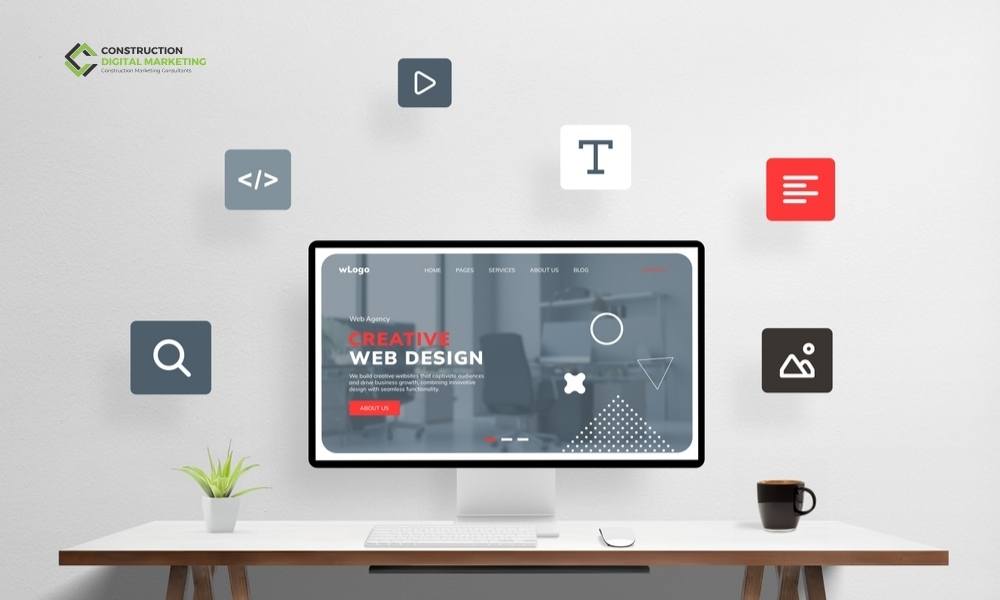In the fast-evolving digital landscape, contractors and construction businesses need an online presence that effectively communicates their services to potential clients. But, when building or redesigning your website, you might find yourself torn between hiring a web designer or a web developer. Understanding the differences between these two roles will help you make an informed decision about which professional to hire for your next web project.
While these two jobs are closely related, they focus on different aspects of website creation. In this blog, I’ll break down the key differences between website design and website development and explain how both are necessary for a fully functional, visually appealing site.
Key Points You’ll Learn:
- Web Development: What it includes and how it impacts the functionality of your website.
- Web Design: How it influences the look and user experience of your website.
- The Role of Front-End and Back-End Development: Understanding the technical side of things.
- The Importance of User Experience (UX): How web designers create a seamless experience for users.
- Web Design Tools vs. Web Development Tools: Which tools do they use, and why it matters for your site.
- When to Hire a Web Designer or Developer: How to make the best decision based on your project needs.
Web Development: Building the Backbone of Your Website
Web development is the process that focuses on creating the core functionality of a website. It involves both front-end and back-end development, ensuring the website works as intended for both users and the site owner. Web developers use programming languages like HTML, CSS, JavaScript, and more complex frameworks to bring a website to life.
Front-End Development is the part of web development that deals with the client side of the website. This includes anything the user interacts with directly, like the layout, images, buttons, and navigation. Front-end developers ensure that a site is visually attractive and functions smoothly across all devices, ensuring accessibility and usability for users.
Back-End Development focuses on the server-side of a website. It manages data, databases, and ensures everything works behind the scenes. For example, when you submit a contact form or place an order on a website, back-end development makes sure your information is processed and saved correctly.
A key distinction is that developers are responsible for writing the code that makes the website work. This includes anything from handling form submissions to managing databases and ensuring everything loads properly.
Web Design: Crafting the Look and Feel
Web design is all about aesthetics and user experience. While web developers focus on functionality, web designers are responsible for how a website looks and how users interact with it. This includes the layout, color schemes, fonts, and overall style of the website.
The goal of web design is to create an aesthetically pleasing website that is easy to navigate and offers a seamless experience for users. Designers use tools like Figma, Adobe Photoshop, and Adobe XD to create visual concepts and wireframes that guide the development process.
Tools for Web Design vs. Web Development
The tools used by web designers and developers are often quite different. Web designers generally work with desktop applications or website builders to create the visual aspects of the site. Photoshop and Sketch are popular choices for design, as they allow designers to focus on creating the overall look and feel of the site.
On the other hand, web developers work with programming languages and frameworks. Tools like Angular.js, Sass, and GitHub are essential for building the structure and functionality of the site. Developers write code and make technical decisions about how the site will function, ensuring that all elements interact seamlessly.
Website builders like Wix, Squarespace, and Webflow are becoming more popular for businesses that want to create a simple, functional site without relying on a developer. These platforms are often used by smaller businesses or individual contractors to build their websites without needing to write any code.

The Importance of User Experience (UX)
One of the most crucial aspects of web design is User Experience (UX). A website that’s difficult to navigate or confusing to interact with will drive users away. UX designers focus on making the website user-friendly by optimizing navigation, improving page load speeds, and ensuring that all interactive elements are easy to use.
For contractors in the construction industry, a positive user experience can make the difference between a potential client reaching out or leaving your site in frustration. The easier it is for someone to find the information they need, the more likely they are to contact you about your services.
Web Development and Design: A Combined Effort
In essence, web design and development go hand in hand. Web design focuses on how the website looks, and web development ensures it functions properly. For contractors, it’s essential to hire professionals in both areas to create a website that not only looks good but also performs well for potential clients.
A beautifully designed website that doesn’t work properly or isn’t optimized for mobile can drive potential customers away. On the flip side, a highly functional site with a poor design might be difficult for visitors to engage with, reducing the chances of conversion.
When to Hire a Web Designer or Developer
Knowing when to hire a web designer or developer depends on the complexity of your project. If you’re looking to create a basic website with minimal interactive elements, a website builder might be sufficient. However, for a more complex, custom-built website that includes specific features like online forms, integrated services, or a portfolio, it’s a good idea to hire both a designer and a developer.
A web designer should be your go-to professional if your priority is crafting an appealing site that’s easy to navigate. However, if you need someone to take those designs and make them functional—handling things like coding and data management—you’ll want to bring in a web developer.
Conclusion
In the digital age, having a professional, well-functioning website is essential for any contractor looking to expand their business and attract more clients. Understanding the roles of web design and web development is key to making the right decisions when building or updating your website.
By understanding both fields, you can ensure that your site not only looks great but functions seamlessly. If you’re ready to build a site that both impresses visitors and helps grow your business, I invite you to contact us for a free demo of our web design services. Together, we can create a website that showcases your business and helps you succeed in the competitive construction industry.


